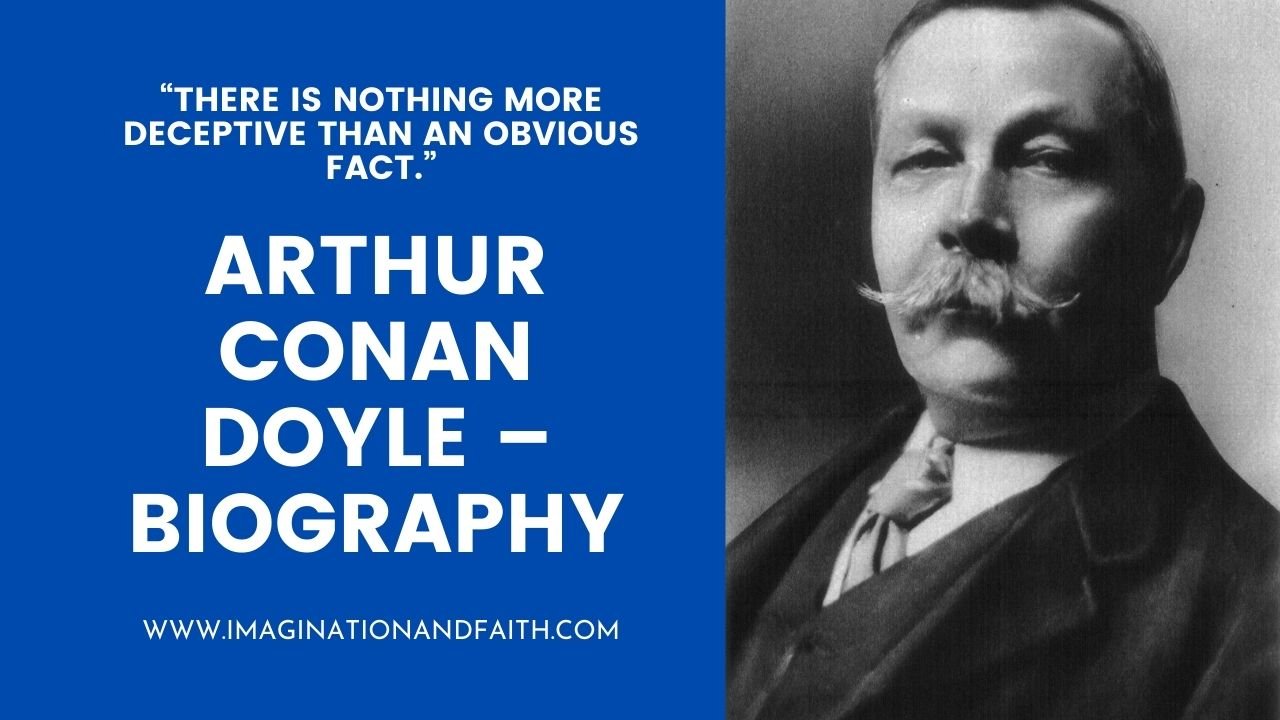
The Biography of Arthur Conan Doyle
Arthur Conan Doyle’s great reputation is credited to his creation of sixty mystery stories. Popularly featured among the characters of his stories are Detective Sherlock Holmes and his devoted assistant Watson.
Synopsis
The city of Edinburgh in Scotland graced the birth of Arthur Conan Doyle on May 22, 1859. The distinctive character of Detective Sherlock Holmes was created in his 1890 novel titled, “A Study in Scarlet”. In his lifetime, Doyle built a total of sixty mystery stories around Sherlock Holmes. In some of his book series within the years 1918 through 1926, Doyle’s writings were thematic to his religious view of Spiritualism faith. On July 7, 1930, Doyle loss his life to a heart attack in the city of Crowborough, England.
Childhood
On May 22, 1859, Arthur Conan Doyle was born to a family of Irish-Catholic orientation and great affluence in the city of Edinburgh in Scotland. Although Doyle’s family gained a societal reputation in the domain of arts, his father passed as a chronic alcoholic who had only a few achievements attributed to him in his field. Known to be an intellectual and bookworm, Mary, Doyle’s mother, was a very enthusiastic woman who had quality education. Mary found solace and delights in narrating mesmerizing stories to her young son, Doyle. Her passionate use of words and creative animation whilst narrating the bizarre stories enlarged Doyle’s imagination. Recalling some of the events of his early life, Doyle stated, “In my early childhood, as far as I can remember anything at all, the vivid stories she would tell me to stand out so clearly that they obstruct the real facts of my life”.
Doyle waved his parents goodbye at age nine and he was relocated to England via a ship. Whilst in England, Doyle was enrolled in a Jesuit preparatory school with the name, Hodder Place, Stonyhurst. Eventually, he graduated to Stonyhurst college and spent about five years there as a boarder. Doyle recalled his experience as a boarding school student as callous. According to him, the correctional method employed by the school was not only cruel and corporal but his colleagues in school were also bullies. As time passed, Doyle derived mental serenity as a story narrator and his stories were greatly cherished by junior colleagues of the same school.
Medical Training and Career
After his college studies in 1876, Doyle derailed from his parents’ expectation to study arts by making a decision to study medicine at the University of Edinburgh. During his study as a medical student, Doyle encountered the inspiring figure of Professor Dr. Joseph Bell. Inspired by his mentor’s profound ability to observe, Doyle created his popular dramatic character, Detective Sherlock Holmes. As a university student, Doyle encountered future writers like James Barrie and Robert Louis Stevenson among his classmates. Doyle created his first impression as a writer with a short narrative titled, “The Mystery of Sasassa Valley”. After that, he wrote another story titled “The American Tale”. This story saw limelight through London Society Publication.
As a year 3 student of medical school, Doyle got a slot as a ship surgeon sailing to the Arctic Circle through whaling ship. The voyage activated Doyle’s adventurous sense. His new awareness of the adventurous world was widely contained in his story, “Captain of the Pole Star”.
Doyle resumed back to his medical training at the University of Edinburgh in 1880. This time, he grew an obsession for Spiritualism or “Psychic Religion”. Eventually, some of his works would characterize ideas of Spiritualism. At the completion of his medical degree in 1881, Doyle had become an apostate to the Roman Catholic faith.
As a professional medical doctor underpayment, Doyle served as a medical officer aboard the steamship Mayumba, sailing from Liverpool to Africa. During that period, Doyle was confronted with the task to function as an author and as a medical practitioner. Eventually, he chose writing and religion over medicine.
Personal Life
As a struggling writer, Doyle encountered and married his first wife Louisa Hawkins. They both had a daughter and a son after they had relocated to Upper Wimpole Street. Eight years after her marriage, Louisa was found to have tuberculosis. During her struggle with tuberculosis, Doyle got attracted to another woman by the name Jean Leckie. In 1906, Louisa was lost to tuberculosis. Following her death, Doyle remarried Jean Leckie and the union was blessed, two sons and one daughter.
A career as a Writer
As a struggling author who just married, Doyle began the mystery novel, “A Tangled Skein” in 1886. Two years after then, the title of the novel was changed to “A Study in Scarlet” and published in Breton’s Christmas Annual. In this work, the widely reputable fictional character, Sherlock Holmes, was starred together with his assistant, Watson. Doyle wrote an additional 59 stories around these characters. In 1887, Doyle tendered two letters to Light weekly periodical publishers that stated his conversion to Spiritualism.
As an active spiritualist, Doyle wrote three books that were professionally accredited as autobiographical. These books are, “The Stark Munroe Letters” (1895), “Beyond the City” (1893), and “A Duet with an Occasional Chorus (1899)”. After gaining a wide appraisal as a writer, Doyle quitted the medical profession for writing. In 1896, “Rodney Stone” stood most famous among his many historical novels.
Most reputable amongst the Sherlock Holmes series were novels like, “The Sign of Four (1890)”, ” The Adventures of Sherlock Holmes (1892)”, “The Memoir of Sherlock Holmes (1894)”, and “The Hound of Baskervilles (1901)” To the disdain of Sherlock Holmes’ fans, Doyle abandoned the series for writings on Spiritualism which include “The New Revolution”, “The Vital Message”, “The Wanderings of a Spiritualist”, and “History of Spiritualism”.
However, he eventually enlivened the Sherlock Holmes stories with a compilation of twelve stories titled, “The Casebook of Sherlock Holmes”.
Death
Doyle rejected his doctor’s medical counsel following the clinical diagnosis that stated that he had Angina Pectoris. In 1929, Doyle went on a spiritualism missionary trip all through the Netherlands. He returned to his residence in Crowborough, England with torturous chest pain and was close to being entirely bedridden. On July 7, 1930, he collapsed and lost his life due to the fact that he struggled to stand for the last time grasping his heart with a hand and touching the flower with another hand.

Leave a Reply
You must be logged in to post a comment.